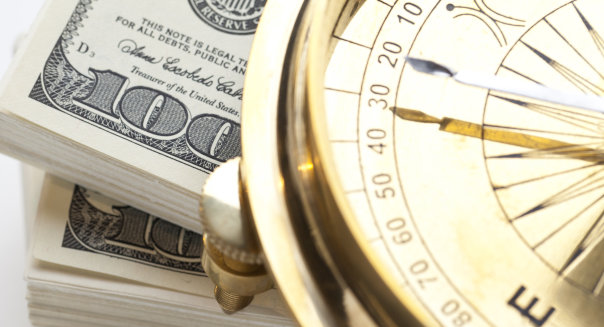
NEW YORK — Measuring your retirement portfolio’s performance by looking only at percentage returns is like evaluating a quarterback prospect by looking only at how many touchdowns he’s scored. To keep from drafting a dog, fantasy football champs also count the number of interceptions he’s tossed. Similarly, measuring portfolio performance right means figuring in risk as well as return.
When you look at your portfolio and measure how well you’re doing, you have to look at the risk you’re taking to achieve those returns.
“When you look at your portfolio and measure how well you’re doing, you have to look at the risk you’re taking to achieve those returns,” says Kendrick Wakeman, CEO of FinMason, a Boston-based investor education firm. “If you’re taking more risk, you should expect more return. If you’re taking less risk, you’re willing to accept less return.”
On Wall Street, risk generally doesn’t refer to the chance of an investment going to zero value. Greater risk, in this contest, means a greater likelihood that a portfolio’s value will dive sharply in market dips as well as climb higher in rising markets. On the other side, if a portfolio is constructed to be stable and resist downturns, returns are likely to be lower.
Most people, understandably perhaps, look mostly or only at returns. “I don’t blame them,” says Wakeman. “That’s a very tangible thing to look at. It’s right there on their statement.” Also, he notes, when braggarts at parties go on about their investments, they never mention risk-adjusted return. Only return. So it’s natural to focus only on return.”
Another obstacle is that the amount of risk in a portfolio can be hard to get a handle on. Professional investors use measurements like alpha, which expresses how much better — or worse — an investment’s return is than that of a benchmark. The calculations for alpha require subtracting the Treasury bill return from the investment’s return, then comparing that to the return of a similarly risky investment. The bigger the alpha, the better.
“Positive alpha is what investment managers strive for,” says Bob Johnson, president and CEO of The American College of Financial Services, a financial education institution in Bryn Mawr, Pennsylvania.
Pros also use the Sharpe ratio. This involves taking an investment’s return, subtracting the return from risk-free Treasury bills, and dividing that by the average volatility of the investment.
The professionals’ way involves a lot of math and looking up arcane investment data like standard deviations from the norm. Individual retirement savers probably don’t need that, any more than somebody playing catch with a few friends needs a pro quarterback’s refined throwing motion.
A simpler but useful approach is to compare your portfolio’s performance directly against another portfolio that has a risk tolerance similar to your own. Wakeman suggests using one of the Vanguard LifeStrategy Funds as a comparison. These four funds have names — Income Fund (VASIX), Conservative Growth Fund (VSCGX), Moderate Growth Fund (VSMGX) and Growth Fund (VASGX) — that tell it all. For instance, a conservative growth investor’s portfolio that meets or beats LifeStrategy Conservative Growth Fund’s returns is probably performing acceptably for most investors.
What is your risk tolerance? Financial advisers generally discuss risk tolerance at the first client meeting. They will then assign a label such as highly aggressive, extremely conservative or somewhere in the middle. Investors can find their risk levels on their own by taking one of the free, brief online questionnaires, like Vanguard’s, that asks questions about when you plan to retire, how you would respond to a market decline and so on.
“There is an old investment adage that says, ‘In investing you can either eat well or sleep well,'” Johnson says. This means an investment can be selected to be riskier and yield better returns or be less risky and provide better protection against down markets, but not both. Measuring performance means measuring risk as well as return.
•10 Worst Cities for Retirement in the United States
•10 Universities With the Largest Ultra Wealthy Alumni Population
•Trade ‘Angry Birds’ For 1 of These Games to Make Money Like Buffett


Leave a Reply